http://www.thealternativedaily.com/
[…]
http://www.thekitchn.com/feedburnermain
Caesar salad is the emperor of summer salads. Cool romaine gets tossed with a creamy, tangy, Parmesan-laced dressing and epitomizes what we both love and hate about simple salads (side-eye at you, wedge salad). While this salad seems simple, there are at least a dozen ways to make a mediocre Caesar salad. Avoid the following when assembling Caesars for your next summer soirée.
http://www.marksdailyapple.com/
 Last week’s post on coffee generated lots of questions. Today’s Dear Mark will answer some of them. First up is a two parter exploring whether L-theanine can make coffee work even better than it already does and if pre-ground coffee beans are lacking in the polyphenol content. Second, is coffee bad for your bones? It’s “common knowledge” that caffeine leaches calcium and inhibits absorption of it, but how true are the claims? And finally, caffeine can increase insulin resistance. What about coffee? Is this a problem for people following the Primal eating plan?
Last week’s post on coffee generated lots of questions. Today’s Dear Mark will answer some of them. First up is a two parter exploring whether L-theanine can make coffee work even better than it already does and if pre-ground coffee beans are lacking in the polyphenol content. Second, is coffee bad for your bones? It’s “common knowledge” that caffeine leaches calcium and inhibits absorption of it, but how true are the claims? And finally, caffeine can increase insulin resistance. What about coffee? Is this a problem for people following the Primal eating plan?
Let’s go:
Mark, I have a few questions because I’ve been waiting for a definitive guide to coffee. First, about the cortisol, I was wondering if supplementing l-theanine would reduce the negative stress inducing effects the caffeine has similar to how a cup of green tea acts? Second, I’ve read from many different sites that pre-ground coffee has a substantial reduced amount of antioxidants compared to freshly ground beans. Also, thanks for the info on inorganic coffee. I had a friend tell me only buy organic because of the pesticide residue content.
1. Many in the nootropics community take it alongside their coffee (or caffeine powder). There’s a fair amount of research into the combination.
50 mg of caffeine with 100 mg of L-theanine improved performance in an attention-switching task and reduced susceptibility to distracting stimuli.
Compared to either alone, caffeine (150 mg) with L-theanine (250 mg) led to improved word and sentence recall, faster reaction time, improved rapid visual information processing, and less mental fatigue.
If caffeine raises your blood pressure, L-theanine blunts the effect.
L-theanine had no effect on the caffeine-mediated increase in vigilance on a task requiring sustained attention.
L-theanine inhibited the vasoconstrictive effects of caffeine in one recent study, but also eradicated the positive mood changes.
L-theanine may be a good addition to coffee, depending on what you’re trying to do. For focusing on the task at hand and getting things done, coffee with L-theanine might be the ticket. For people who get the jitters and the shakes from coffee, add a little L-theanine. If you’re looking for the mood effects of caffeine—that dose of “productive optimism” that makes idea generation run smoothly—you may prefer coffee alone.
As always, your mileage will vary. Try it out—a cup of strong green tea is a good source of L-theanine, and L-theanine supplements exist for relatively cheap—and see how it affects your coffee high. It’s not going to do any damage, and even if you don’t end up using it with coffee, L-theanine is a good thing to have around for general anxiety and stress.
2. Yes, this is partially true. Polyphenols exist not to provide health benefits to us (although it’s a nice side effect) but to protect the plant from oxidative stress. Just as light and heat exposure degrades the polyphenol content of extra virgin olive oil, rupturing the cell walls of a coffee bean and increasing the surface area exposed to the elements through grinding degrades its polyphenol content. It’s not actively bad for you. It’s just probably not as good. Nor does it taste as good.
I enjoyed your article on coffee, however I would like to know what the correlation is between caffeinated coffee and calcium intake or even if there is one. A number of years ago I had a serious spiral fracture to my leg and my doctor told me not to consume caffeine as is inhibited calcium from being absorbed by the bones. Any truth to this?
Thanks
Leslie Stevens
Thanks for the kind words, Leslie. I’m glad you liked the post.
Luckily for you, this claim appears to be over hyped if not altogether incorrect. Just like the popular notion of animal protein leaching calcium from your skeleton and turning your blood into bone broth, the reverse may even be true: coffee consumption has even been linked to lower rates of osteoporosis and improved bone mineral density.
Overall, observational (correlational) studies find a small link between coffee consumption and fracture risk in women. They find the opposite in men: coffee intake is protective against fractures.
A controlled trial in healthy premenopausal women found that 400 mg of caffeine a day had no significant effects on calcium economy, including urinary calcium, fecal calcium, or calcium absorption. There were slight decreases in bone resorption (transfer of calcium from bone to blood), bone accretion (transfer of calcium from blood to bone), and calcium pool turnover (less activity in the bone all around).
In Swedish women, high coffee consumption is linked to a minor reduction in bone mineral density (3-4%) but not increased fracture risk. This relationship was strongest in women who consume less than 700 mg of calcium a day, who did have an increased risk of fracture.
In premenopausal Korean women, coffee intake has no correlation to bone mineral density.
In postmenopausal Korean women, coffee intake has a protective relationship with bone mineral density.
Caffeine has a very slight inhibitory effect on calcium absorption. It’s so slight that a mere tablespoon or two of milk provides enough calcium to make up for any calcium lost to your daily coffee.
What else could explain a damaging relationship?
High caffeine intake is very often a marker for low calcium intake. The more coffee (and energy drinks) a person consumes, the less dairy (the most common source of calcium in Western diets) they tend to consume. A low calcium intake exacerbates the otherwise minor effect caffeine has on calcium economy.
High coffee intake can be a marker for poor sleep. Sleep loss is strongly linked to bone loss. Caffeine not only affects sleep when taken late in the day, it’s frequently used by people who sleep poorly and need it to stay awake and alert.
That said, limiting coffee (and caffeine) while healing from a fracture may be prudent. Animal studies indicate that caffeine has a direct effect on the bone healing process, when even small perturbations to calcium economy are significant.
So while you shouldn’t adopt a pot a day habit while recovering from bone injuries, healthy people shouldn’t be too concerned. If you do drink a lot of coffee, make sure you’re eating enough calcium (and protein, and vitamin D, and vitamin K2, and collagen, and lifting heavy things, and all the other things that determine bone health).
In a previous post, I believe it was a “Dear Mark,” you mentioned that coffee could temporarily increase insulin resistance, which makes that fact that many on a SAD diet pair coffee with a pasty especially bad.. Is it coffee specifically, or caffeine that triggers insulin resistance?
Caffeine is “worse” than coffee, to be sure. Coffee has protective polyphenols, like chlorogenic acid, with proven benefits on insulin sensitivity. Caffeine does not.
And coffee consumption appears to be protective against liver damage, correlating with lower liver fat levels and improved liver enzyme numbers. Another study found that high liver enzymes tend to predict insulin resistance. If coffee improves liver enzymes, it’s probably improving insulin resistance, too.
Another study found that low-energy diets either high in coffee or low in coffee led to similar improvements in insulin sensitivity.
And still another study, this one a controlled trial, gave type 2 diabetics (some of the most insulin resistant folks around) 5 cups of coffee every day. Although 8 weeks weren’t enough to see any changes to insulin sensitivity, their liver function—a likely harbinger of insulin sensitivity—did improve.
You read the post from several years ago, so you know that the increase in insulin resistance sometimes caused by coffee/caffeine is entirely physiological: coffee increases adrenaline, which releases stored fat, and we need to be a little insulin resistant to burn that fat effectively.
Of course, this means that a big mug of coffee alongside a plate of pancakes isn’t a great idea. But most of my readers aren’t eating big plates of pancakes. Right?
That’s it for today, folks. Take care and be sure to help out with your own input down below.
Originally Posted At: https://breakingmuscle.com/feed/rss
We are bombarded with magazine ads, infomercials, and Instagram pictures of fit looking people with shiny, rippling washboard abs. Most media hype would have you believe that in order to obtain that illustrious six-pack, endless sit ups are the answer. In reality, regardless if you are a guy, girl, or a new mother looking to tighten her tummy, doing endless sit-ups is not the way to get fully defined abdominal muscles.
Originally posted at: http://www.nerdfitness.com/
Amy lost 116 lbs in 13 months.
That might sound like a big, daunting number. Amy certainly felt that way once. She had no idea how to go about losing weight, had tried and failed before, going in half heartedly:
I would cut my portions or eat salads for a week but I really did’t have the information to lose weight in a healthy way. I also thought I had to be perfect. If I ate a cookie, or if I missed a workout – I just gave up.
In the quest to get healthy, sometimes it’s simply about finding a way to go workout when the situation isn’t perfect (it’s too hot, it’s too cold, you’re tired, you’re busy…) or eat right when we really don’t want to.
Amy’s path forward embraced the realistic, sometimes reluctant heroism of heroes like Deadpool or Wolverine.
“It isn’t ever going to be perfect – no one is perfect. The way I eat today isn’t perfect but it’s a helluva lot better than the way I used to eat. I tried things, and some of them worked and some didn’t so I kept what worked and changed what didn’t until I got to something that worked and I could live with for the rest of my life. Don’t be afraid to try, you can always make changes as you go. In fact, if you never have to make any changes, you are probably doing something wrong.”
Let’s learn a little bit more about how Amy lost the weight, got in shape, and transformed her life in the process.
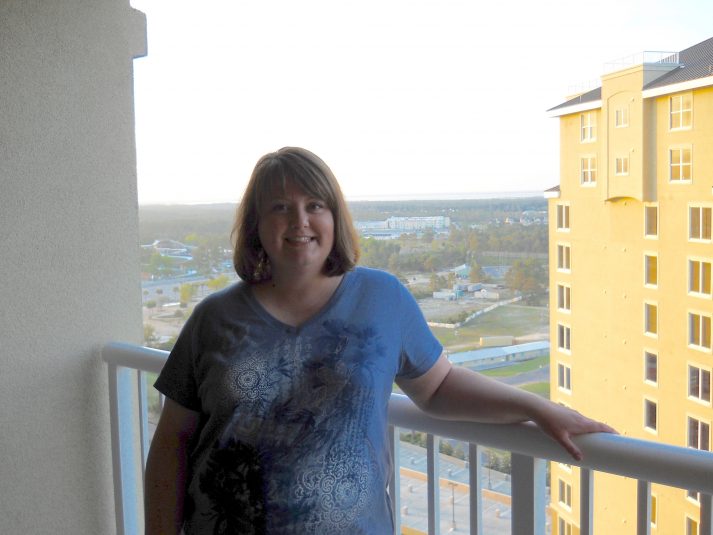
Two years ago in the summer of 2014 Amy was experiencing some hip and knee pain. Her doctor told her that it was bursitis in her hip, either caused by overuse or from being overweight.
“He was kind enough to let me figure out which one of those reasons might apply to me,” Amy recalls.
Like most of us, it wasn’t that Amy was oblivious. She actually had problems with a herniated disc when she was 18 and had surgery at 25. In her late 30s talking to the doctor, she knew that carrying that extra weight was doing her no good.
“But it was a moment of awakening,” she remembers, “to be told I was damaging other parts of my body, too.”
No matter what change we have been thinking about making, there’s usually a difference between knowing it intellectually, and feeling it deeply enough in your bones to get started and stick with it. This was Amy’s: “I started wondering what I would be like in another 10 years and how much damage was I doing to myself.”
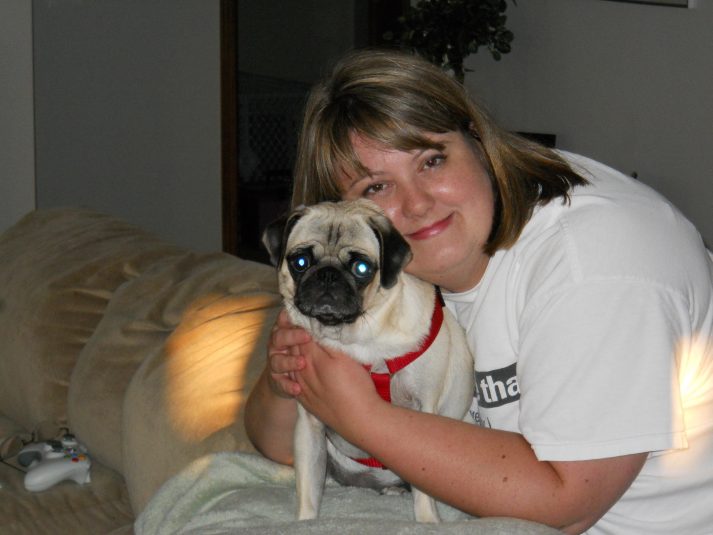
When we decide to get started on the quest to get healthy, there seem to be a lot of pitfalls. One of the big ones, as we call it, is collecting underpants. That’s what we call reading and reading and reading, and using the information-collecting-phase of your process as an excuse never to get started.
This was one area where Amy never had any problems. In the fall of 2014 when she decided to get started, she just started with what she thought she needed to do: eat less. But, she didn’t exactly approach it in the most skillful way. Here’s Amy:
“You can imagine that if I was starving all the time eating my regular portions, I was really starving cutting down my portion size. This did not work. My husband has a friend named Mike and he said if I ever wanted to know how to get in shape I should talk to him, so I did. He is into strength training and he knew how to get in shape, lose fat and build muscle. So I picked his brain and he told me that when it came to losing fat, nutrition was the key. He also suggested strength training to help maintain muscle.”
Amy’s new fitness adviser explained the importance of protein, how macronutrients worked, and introduced her to strength training.
But this didn’t happen right away. Amy did what she had always done, and she struggled for over a month until she tried something different. That’s when things really seemed to pick up:
“From there I started doing a ton of internet searches looking for information on protein and nutrition and strength training…. that is how I found Nerd Fitness. The first thing I read were the Rules of the Rebellion and I remember thinking, “Ok, these people are cool!” I just started reading all of Steve’s blogs and absorbing as much information as I could. I loved the idea of making permanent changes because I knew what I was doing wasn’t getting me anywhere and I really wanted to change my life. I was willing to make the commitment, I just needed to know what direction to take to get started.”
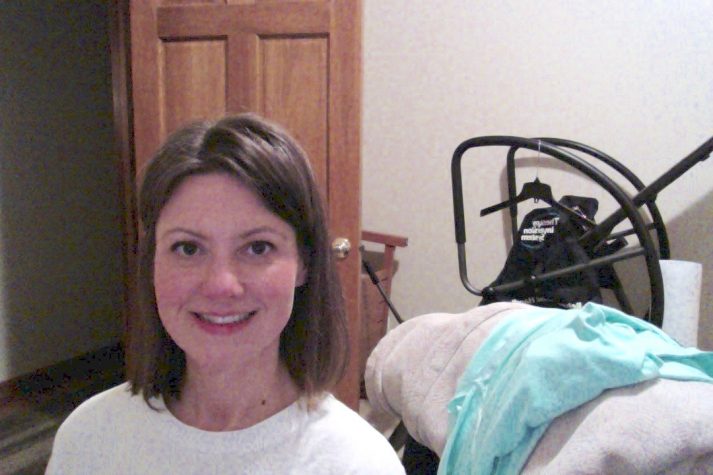
Amy, congrats on your success, and thanks for shining a light on the path you took. I’d love to hear more about how you went from being totally confused when it came to nutrition, to the superhero you are today.
In the beginning, I was at a total loss for what to eat. At first I just reduced my portions but was still eating the same processed foods. This didn’t work at all. I had read Steve’s article, “How to Not Suck at Losing Weight.” decided to make small sustainable changes in my diet. But I couldn’t help to be at a loss sometimes: If I didn’t have cereal for breakfast, what else was there? Everything I ate was processed or a starchy carbohydrate. I had to spend some time at the grocery looking in the produce department and trying to come up with something other than a salad as a way to incorporate more vegetables into my diet. It was also tough to let go of soda, and sugar in general. I really thought I wouldn’t be able to live without my soda or sweets. I transitioned from it slowly though.
How did you make the transition?
I went from eating my sugary cereal in the morning to eating Cheerios (not perfect but it worked while I transitioned) and I drank my whey protein shake.
I started bringing my lunch to work.
I swapped the potato chips for carrot sticks and the soda for unsweetened tea.
I started eating healthier vegetables at dinner instead of the white potato.
I made little changes every couple of weeks. There was something Steve had written about how hard it is to get rid of an old habit and how it was easier to establish a new habit and crowd out the bad one. That’s what I started doing. I just started adopting more and more good habits until there was no more room for the bad ones.
When I started I was counting calories, and eventually got sick of it (one extreme downside to this method is that you never get to stop thinking about your weight or what you are eating – you are always planning and calculating – bummer). So, I decided to go “modified” Paleo with the strategy above. The transition took a couple of months. I still eat dairy and I do eat a sandwich for lunch during the week, but the majority of what I eat is meat, vegetables and fruit.
Wow, what a journey. It’s great to see how you took gradual steps over the course of many months just to sort out certain aspects of your diet. When we see progress photos or inspirational photos on Facebook, it can feel like we’re just expected to become an overnight success. You’ve really shown how the real work is in the trenches, day in and day out.
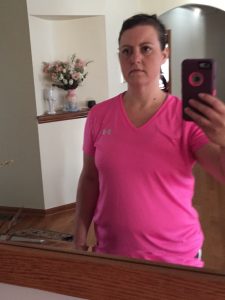
Love the focus on diet, but what role did exercise play?
Because of my back and hip issues, I was worried about injuring myself. So, I set the goal of eating healthy every day and doing at least 1 physical activity everyday.
Because I didn’t know what my physical condition/pain level would be on a daily basis I didn’t want to tell myself I had to exercise for a set amount of time or miles, etc. If my back was hurting and I wasn’t able to workout for an hour, I didn’t want to consider myself a failure.
My goal was just to do one thing, even it was just stretching… it was one positive step in the right direction. I just made a promise to myself that I would do the most I was physically capable of doing everyday so if I knew in my heart that I was in pain and all I could do was stretch or walk for 5 minutes, I was a success. I started off very slowly with strength training and bought the seated elliptical to accommodate my back issues.
I found out though that the more I did the more I was capable of doing. I didn’t always feel like working out though. Steve had written an article about if you get dressed to exercise, you’ll do it. After dinner every night I would change into my workout clothes. I was sore and tired but I would get dressed, and then I would end up on the elliptical.
Wow, you not only were determined, but incredibly smart and kind to yourself. It sounds like a winning combination: the grit to stay with it, and the self-compassion to give yourself a break when you need it. What did you work up to?
Well, I actually put 8 miles on my elliptical regularly for 6 months straight. Which I know is a lot and not for everyone, but for some reason, my body was loving it. It was almost like my body had just been waiting for me to use it. By this time it was summer, both my elliptical and strength training progressed, and I was able to get outside so I started to ride my bike and play tennis. This is when I started doing Steve’s beginner bodyweight workout. With my back issues, I found that I did better with bodyweight workouts and resistance training than using free weights. I have also found that doing push-ups (I started that with Steve’s 30 push-up challenge) have been great for my back as well (I’m up to 100 push-ups 3 times a week).
I still don’t keep a set schedule for exercise – my goal is to just do something physical that I enjoy everyday. Because I’m no longer in pain, the exercise is fun, and I have a lot more options to choose from. This past spring I even went on a hike for the first time in my life. I hiked in a state park with my husband. We ended up hiking about 6 miles. It was an awesome experience and I was really proud of myself.
We always talk about how when you level up in a video game, you see your experience move forward right before your eyes, giving you the motivation you need to keep moving forward. Did you use any technique to track your progress?
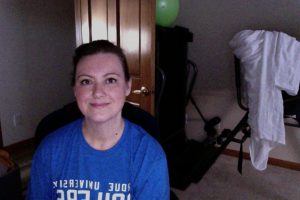
At first I tracked my progress by weighing myself daily. My mood really rose and fell based on that number but after awhile I noticed patterns of when I would gain and lose and remain the same. It helped to desensitize me because I knew that there would be fluctuations and that I always started to lose weight again. Steve wrote an article about how the scale can lie and it’s a good idea to use measurements and take pictures so I started doing that. It really saved me, because there were times when I felt I wasn’t making any progress and I was able to look at my pictures and see how far I had come, and it gave me the motivation to keep going.
It sounds like there was a separate, complete learning process in every area, from diet to tracking. What was the most important one?
The most important change I made was my attitude. I didn’t need a diet; I needed to change my life. I knew I wasn’t healthy. I felt miserable, and I was missing out on life. I originally wanted to lose over 80 lbs to be at a weight that was considered healthy. I mentally couldn’t face that number so I decided on 80 lbs as my goal. I focused on my two daily goals and only told myself that I needed to move forward. Using my two goals each day (making healthy nutrition choices and moving my body), things took care of themselves. In 13 months I lost 116 lbs.
The stress of dieting and getting healthy can often be an impediment, leading to doubt and all sorts of bad decisions. How about your support network? You had an early fitness adviser, what else?
I had a wonderful support system of family and friends. Everyone was cheering me on, and so happy for me. In the beginning I didn’t want to share what I was doing with anyone because I was afraid I was going to fail. But it’s hard to make life changes on your own, you need support. I felt like everyone at Nerd Fitness had my back too. There was always an article I could relate to or read posts and I knew I wasn’t alone. When I joined the Rebellion, I felt like I was finally in a group that had the same goal for their lives that I had – I just want to be the best version of me that I can be.
Congratulations on your success. What’s new these days? Anything you’ve been doing that you didn’t’ do before? Any other changes you’ve noticed in yourself?
Tennis! I used to play and haven’t been able to play in close to 20 years. I started playing again last summer and have been playing this summer as well. One of my goals is to start playing in tournaments again.
I have a lot more confidence in myself. I am stronger and more capable than I ever gave myself credit for. When I’m faced with challenges now, I know I can handle it. I also am a better problem solver. I was constantly having to evaluate what I was doing and how it was working and coming up with ways to get around obstacles and challenges. Now when I set out towards a goal I know I can get there.
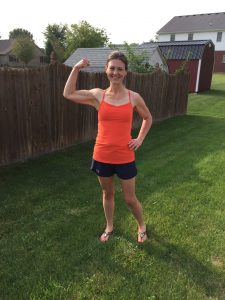
Okay, nerd cred time: Star Wars or Lord of The Rings?
Star Wars (the original trilogy)
Yes! Favorite Video Game?
Donkey Kong
Favorite quote?
“Nothing is impossible, the word itself says, ‘I’m possible’.” – Audrey Hepburn
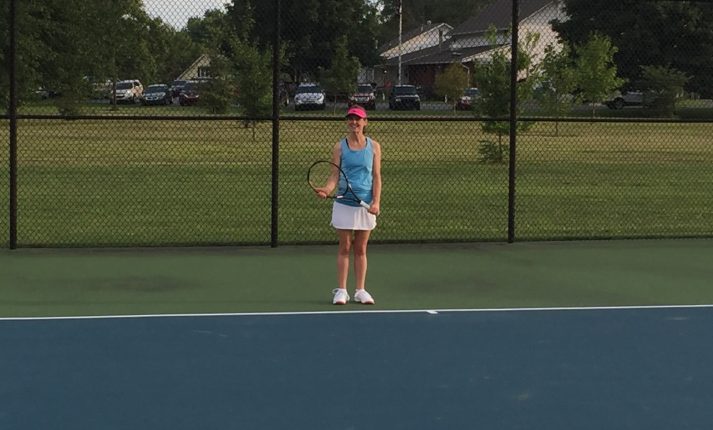
Don’t give up. You only have to get it right once. Don’t beat yourself up about the past; that was yesterday and you don’t live there anymore.
– Dumbledore Amy
In the Nerd Fitness Rebellion we have hundreds of heroes like Amy. Sometimes this can feel daunting, like walking into a gym and seeing a “level 50 version” of a character. But just like Harry and Luke, Frodo and Katniss, these are just ordinary people, who took one step after another.
They didn’t start with all the knowledge required. They didn’t start with a love of fitness. Amy certainly didn’t start with a love nor ability to do miles upon miles on the elliptical or the ability to rock a bodyweight workout.
Instead, they asked, “What’s first?” And they got started. They took action right away, and sometimes they made mistakes. So they made some changes, and they kept going.
Amy made tiny changes to her diet over time. She gave herself a huge break when it came to fitness, but was also her own toughest coach: she had to do something every day.
She built a system that was both determined and forgiving.
And she had smart systems in place to help her keep going. She used photos to track her success, and learned to stop freaking out so much about the normal fluctuations of the scale. She built a team of allies to support her along the way.
These systems helped to keep her on her path, but ultimately it was her own decision to keep figuring it out that led to her success.
There’s a million corny quotes about the importance of failure and getting back up. But that only matters if we get started in the first place. Whether that’s a commitment to join the Nerd Fitness Academy, or just testing out the Beginner Bodyweight Workout – start!
Our heroes stumble along the way. That’s why their stories are so darn impressive. So get started. Stumble. And figure out what’s next.
Do you have any questions for Amy?
Stop by and leave a note of congratulations!
-Taylor
###
Originally Posted At: https://breakingmuscle.com/feed/rss
Originally Posted At: https://breakingmuscle.com/feed/rss
The hip joint is one of the most mobile in the body, so why can’t you move yours? Most people I know waste their time with:
All without making much progress. And that’s a real shame.